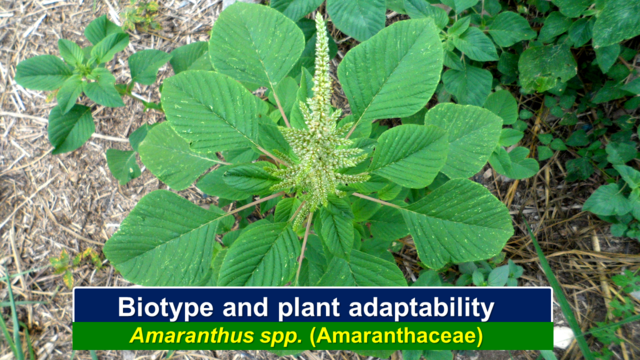
Dear friends, followers and members! of the HIVE platform.
In this entry, I will share with all the scientific community of #STEMsocial, and lovers of plant ecophysiology, elements related to the agromorphological adaptability of the genus Amaranthus (Amaranthaceae), whose specimens are characterized by presenting a biotype of herbaceous growth and a C4 photosynthetic mechanism. The article describes in detail the competitive problems caused by these arvenous species in the agricultural and livestock sector, mainly due to their high photosynthetic rates and efficient use of water, compared to crops such as corn, bananas, fruit trees and oil palms.
Introduction
According to anatomical and physiological studies, the genus Amaranthus is composed of species whose metabolic pathway for the assimilation of carbon dioxide (CO2) in photosynthesis is mediated by morphological adjustments at the leaf level that allows them to increase the concentration of environmental CO2, a mechanism that has been interpreted as a biological adaptation to increase photosynthetic efficiency [1].
These morphological adaptations at the leaf level are known as Kranz's anatomy, and the species that have this sophisticated mechanism are designated as C4 plants. On the other hand, it is important to note that the biochemical process involved is characterized by a considerable decrease in the high photorespiratory rates typical of species with C3 metabolic pathways, which is why these morphological adjustments are associated with efficient water use.
Consequently, in the post, we will be describing what is related to this photosynthetic route, and the agromorphological adaptability mechanisms observed in Amaranthus spp. (Amaranthaceae), whose species are commonly distinguished as; amaranth, bledo or pira.
Biotype and plant adaptability
Photosynthesis and morphohistological adjustments
From the physiological point of view, photosynthesis is conceived according to [4], as a biological process of photoabsorption of light energy, carbon dioxide and photoassimilation of the elements that make up organic matter, where plant species are able to transform carbon dioxide and inorganic minerals to organic compounds, this conversion of biomolecules is basically possible, thanks to the morphohistological preparation of photosynthetic apparatuses mainly in the mésofilos of the leaf blades.
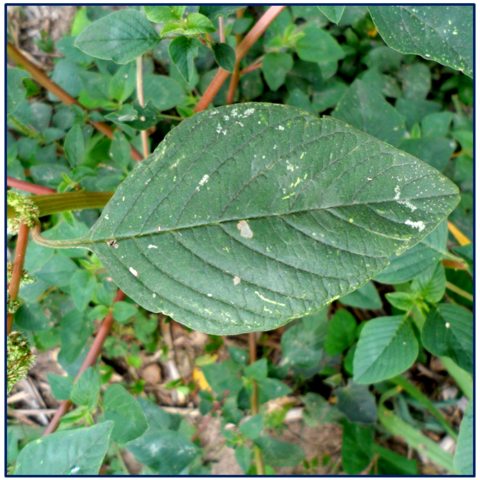
Fig. 2 Leaf blades of Amaranthus dubius. Author: @lupafilotaxia.
There are different mechanisms or metabolic pathways for the assimilation of carbon dioxide, however, the basic structural configuration of foliar mesophiles consists of palisade parenchymal cells, inside which are the photosynthetic pigments involved in the process, and where the biomolecule 3-PGA is located as a primary carbon acceptor, while species with this morphological arrangement are identified as C3 plants.
However, as a result of evolutionary pressures of a soil and climate nature, a small number of plant species growing wild in tropical ecosystems have developed anatomical changes in the structural configuration of their leaf mesophiles, in order to reduce photorespiration and make photosynthesis more efficient, isolating the basic mechanism of initial carbon dioxide fixation in the palisade parenchymal cells, Hence, the Kranz anatomy of multiple plants is interpreted as a morphological adjustment to favor photoabsorption and photoassimilation, so that these changes in morphological adaptability are specifically due to the presence of a sheath consisting essentially of photosynthetic cells, located around the conduction tissues in the leaf blades, species with this arrangement are known as C4 plants.
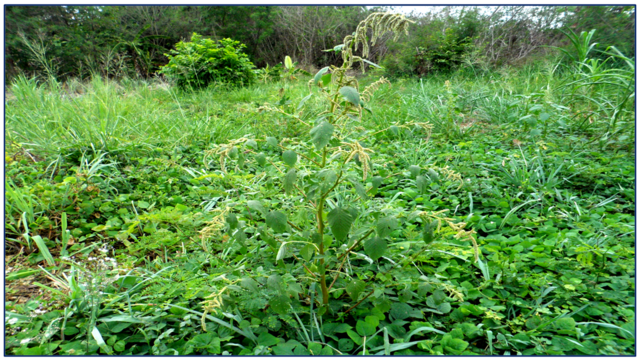
Fig. 3 Vegetative growth of Amaranthus dubius. Author: @lupafilotaxia.
Biological characteristics
Amaranthus spp. are categorized as species of annual phenological duration, herbaceous consistency and organographic adaptability of camphyte condition, which reveals that their vegetative and reproductive buds are located all year round within the first 50 cm of the soil [2].
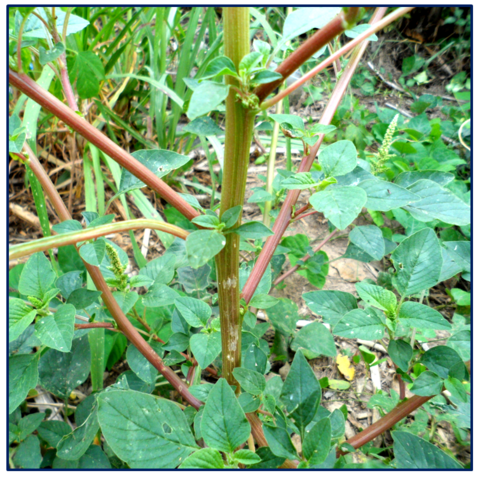
Fig. 4 Stems and branching system of Amaranthus spp. Author: @lupafilotaxia.
Morphophysiological adaptations
The physiological characteristics observed in the species of the genus Amaranthus, are considerably heterogeneous, presenting in addition to the anatomical system type Kranz, adaptability to develop in hyperthermophilic conditions (vegetative and reproductive development at high temperatures), as well as ease of growth in disturbed or ruderal ecosystems (environments strongly overexploited by activities of anthropogenic origin), with regard to adjustments of morphological adaptability, some specimens of Amaranthus, for example, the A. spinosus has appendages in the form of spines in its vegetative structures, a biological aspect related to its defence mechanism [3].
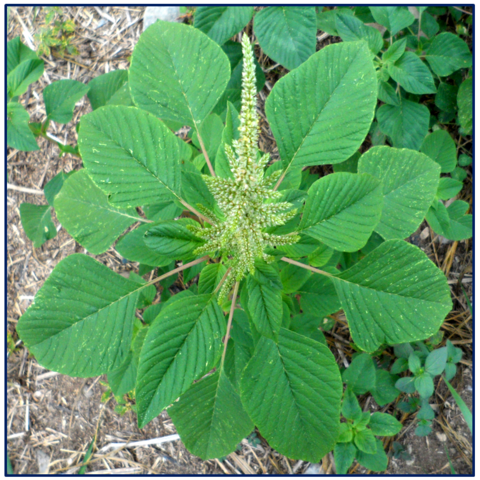
Fig. 5 Inflorescence and phyllotoxic arrangement of Amaranthus spp. Author: @lupafilotaxia.
Ecological breadth
In terms of ecological conditions, the growth and reproduction of Amaranthus spp. is optimized in predominantly tropical environments, with temperatures above 32 °C, rainfall between 2,000 and 2,800 mm per year, soil conditions with a high organic matter content, loamy texture and sufficient availability of nitrogen [1].
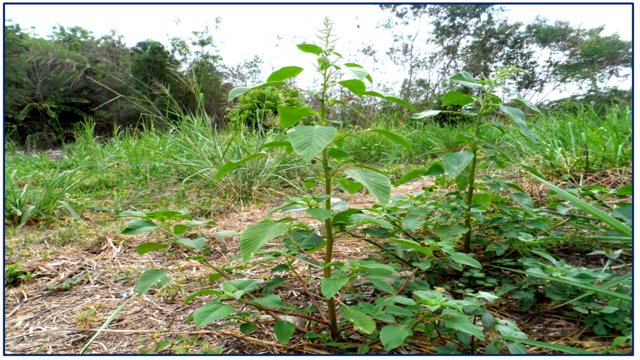
Fig. 6 Seedlings of Amaranthus spp. growing in the southern grasslands of Lake Maracaibo - Venezuela. Author: @lupafilotaxia.
Livestock Potential and Utility
Bio-concentration of macronutrients
As a result of morphological advantages, which directly increase photosynthetic efficiency in specimens of the genus Amaranthus, species such as A. dubius exhibit bioconcentration of mineral elements in their organographic structures, both vegetative and reproductive, an aspect that is moderately used as an alternative feed in livestock production, because the stems, leaf blades, flowers, fruits and seeds have high values of macronutrients, fiber and appreciated palatability [5] .
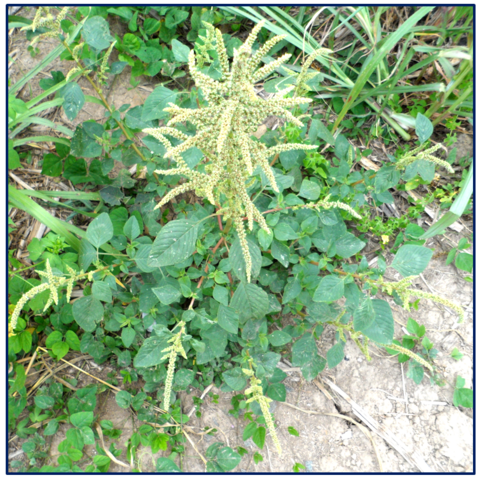
Fig. 7 Vegetative and reproductive structures of Amaranthus spp. used in animal feed. Author: @lupafilotaxia.
Agro-morphological field study
Species and area of study
In order to socialize some agro-morphological responses that show the plant species of herbaceous biotype and photosynthetic mechanism C4, I will socialize with all of you a study on the growth habit and photosynthetic potential of Amaranthus spp, (Amaranthaceae), the study area corresponds to the cultivation area of the Botanical Garden of UNESUR, university institution located in Santa Barbara de Zulia - Venezuela.
Methodological approach
To determine the characteristics of growth, development and photosynthetic potential of Amaranthus spp. (Amaranthaceae), agro-morphological observations were made to determine in situ: photosynthetic capacity, accumulated carbon and leaf area index.
Agro-morphological results
Photosynthetic capacity
According to the data collected in the field, the Amaranthus spp. specimens showed the highest photosynthetic capacity recorded at 2.70 g/m2/day, compared to the specimens sampled from the family poaceae with 1.20 g/m2/day. However, even though the grasses considered in this study also have a C4 mechanism, the detriment of their photosynthetic capacity may be related to a greater occupation of space by the Amaranthus spp. specimens.

Fig. 8 Box and whiskers graph, showing the statistical behaviour of the photosynthetic capacity variable. Author: @lupafilotaxia.
Accumulated Carbon
In relation to accumulated carbon, the results showed a similar behavior to that recorded in the photosynthetic capacity variable, as the specimens of Amaranthus spp. showed the highest value of 0.83 gr in contrast to the maximum value of 0.41 gr shown by the individuals sampled from the family Poaceae.
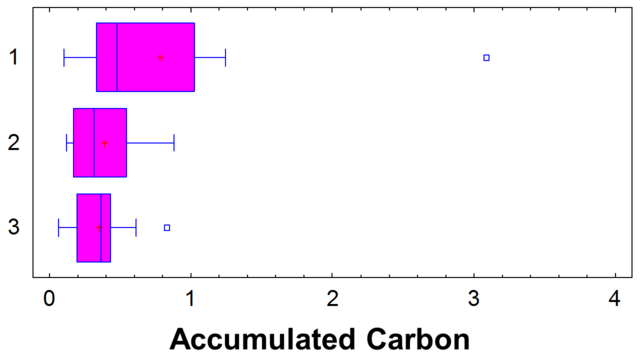
Fig. 9 Box and whiskers graph, showing the statistical behaviour of the accumulated carbon variable. Author: @lupafilotaxia.
Leaf area index
With respect to the leaf area index, the population averages in Amaranthus spp. were 0.62 cm2, compared to 0.49 cm2 in the individuals sampled from the family poaceae. Therefore, these results allow us to infer that this homogeneous behavior is the result of high photosynthetic rates, which make the genus Amaranthus a highly competitive group compared to cultivated species.
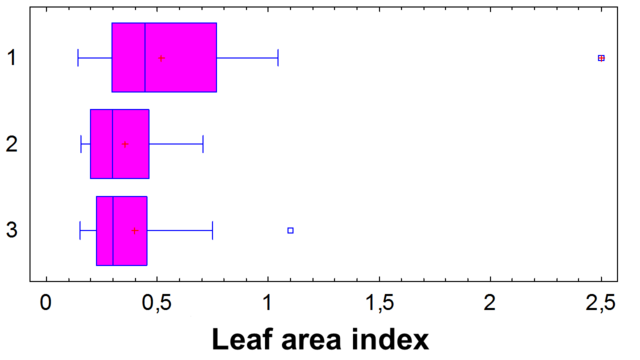
Fig. 10 Box and whiskers graph, showing the statistical behaviour of the leaf area index variable. Author: @lupafilotaxia.
SCIENTIFIC CONTRIBUTIONS OF THIS PUBLICATION
- The information socialized in this post, is of promising importance for the Spanish-speaking professionals in the social network HIVE, particularly for those who exercise scientific-technical roles in the areas of agronomy and livestock production, this because, in the published content are developed elements that allow to know the agro-morphological responses that show the plant species of herbaceous biotype and photosynthetic mechanism C4, in addition to the potential and usefulness of livestock reported in Amaranthus spp. particularly related to the bio-concentration of macronutrients. On the other hand, the aspects considered in the agro-morphological field study offer valuable information for future research where other photosynthetic variables can be evaluated.
BIBLIOGRAPHICAL REFERENCES CONSULTED AND CITED:
[1] Bavec F., and Mlakar S. Effects of soil and climatic conditions on emergence of grain Amaranths. Eur. J. Agron.2002;17: 93-103. Article: Online access
[2] Anten N., and Werger M. Canopy structure and nitrogen distribution in dominant and subordinate plants in a dense stand of Amaranthus dubius L. with a size hierarchy of individuals. Oecologia. 1996;105:30-37. Article: Online access
[3] Cheeke P., and Bronson J. Feeding trials with Amaranthus grain, forage and leaf protein concentrations. 1979;5–11. Article: Online access
[4] Azcón-Bieto J., y Talón M. Fundamentos de la fisiología vegetal. Mcgraw-Will, Internacional. 2da edición. 2008. Book: Online access
[5] Kinzel H., and Lechner I. The specific mineral metabolism of selected plant species and its ecological implications. Bot. Acta. 1992;105: 355-361. Article: Online access
ATTENTION
Readers and followers
If you wish to read more scientific articles in English or Spanish, of excellent academic quality, do not hesitate to visit #STEMsocial and #STEM-espanol, communities that promote scientific content mainly in the areas of Science, Technology, Engineering and Mathematics.


Twitter #posh link:
This is highly educational and well written
Thanks again for visiting the blog.
Developing this type of field trials, taking C4 plant species as a pattern, allows relating ecophysiological responses, and at the same time, the information serves as theoretical input in the research carried out by students in the last semester of the careers related to Ecology and Agronomy.
Greetings @gentleshaid, we continue reading.
If you appreciate the work we are doing, then consider supporting our witness @stem.witness. Additional witness support to the curie witness would be appreciated as well.
For additional information please join us on the SteemSTEM discord and to get to know the rest of the community!
Thanks for having used the stem.openhive.network app and included @steemstem in the list of beneficiaries of this post. This granted you a stronger support.
We make curry out of this leaf in Kerala. One of my favourites.
Excellent publication, it has a great scientific and professional quality. Biology is not my area but you can understand a lot from this article. I really liked the graphics of behavior of the photosynthetic capacity variable, behavior of the accumulated carbon variable and behavior of the leaf area index variable, they are very well made and we took into account the marks that indicate the errors that occur in every statistical process of measurement.
Congratulations.